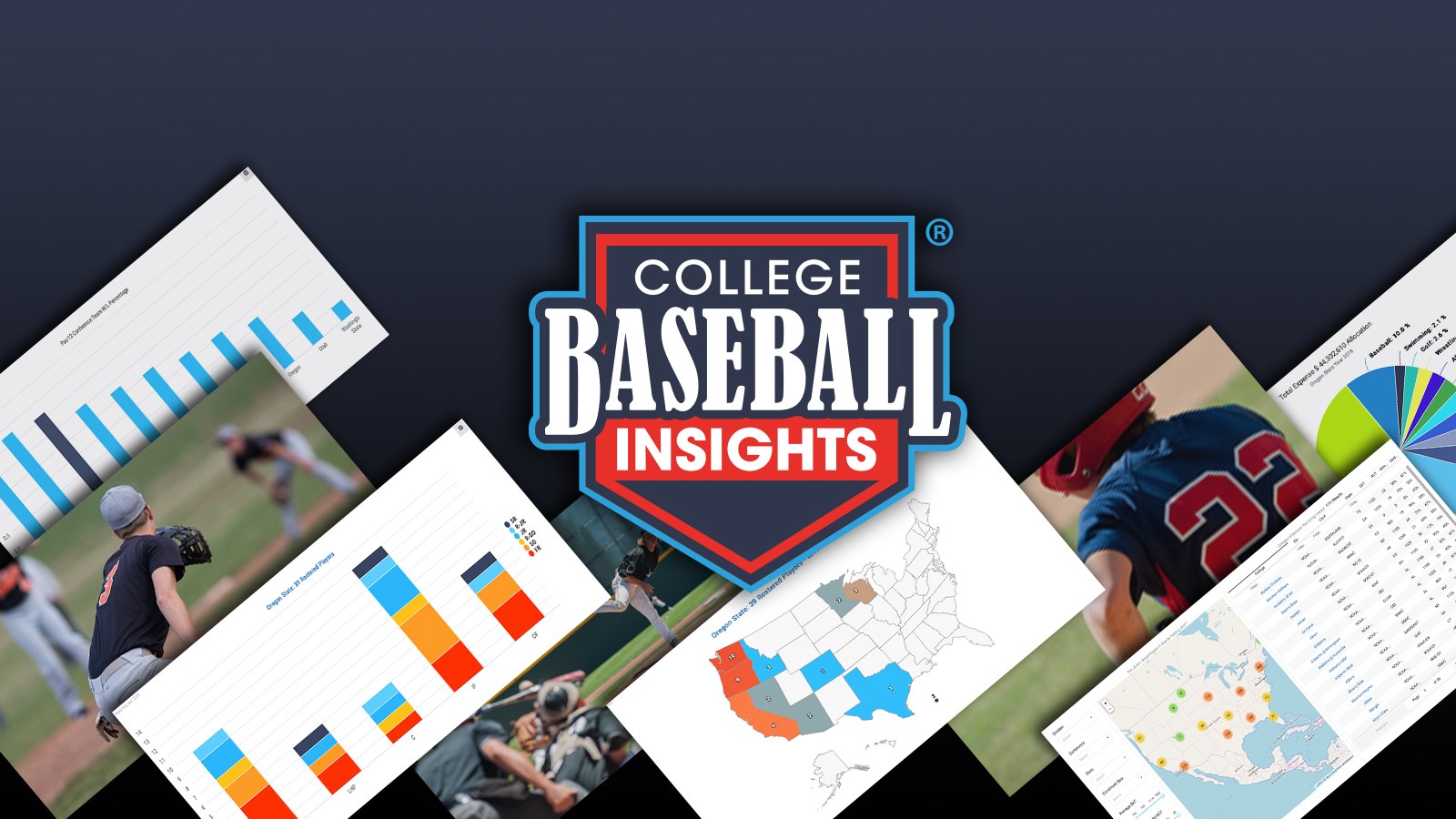
College Baseball Insights is a one-stop shop for amateur players, parents and coaches that offers a snapshot view of college baseball programs around the country. The platform, which was developed in 2014, affords users the opportunity to search for schools by division, conference, ACT/SAT requirements and more, and includes information on roster breakdown by class and position, player turnover, team roster insights, historical results, head coach information, even operating budgets dating back up to 10 years.
College Baseball Insights founder Art Crichlow created the site after going through the college baseball search process with his son. After all the weight training, lessons, practice, games, camps and showcases, the Crichlows were at a loss when it came to reaching possible programs on their own.
“I’ve always had a passion for baseball since growing up and playing at different levels,” Crichlow said. “I became more involved once my youngest son started playing. When he turned 13, he started playing travel baseball with a premier organization in New Jersey. So for five years, travel and high school baseball was our primary activity for 10 months out of the year.”
“The concept of College Baseball Insights started in September of 2014. Upon my son graduating from high school, I started researching the existing business solutions for college baseball recruiting process. What I found out was that most “solutions” were from a social networking perspective, connecting coaches with players. I thought the actual college research search piece was missing, so I started looking into a possible solution to help student-athletes and families get a quick understanding of a school’s roster management process, among other things.”
College Baseball Insights is not just for players and parents. High school and travel coaches can gain an advantage in terms of educating and finding the right fit for their players. And college coaches clearly benefit from seeing how their school stacks up against the competition in terms of roster breakdown and attrition, budget, and more.
The site, which offers subscriptions you can renew annually ($99.99 per year), every three months ($49.99) or monthly ($19.99), provides its users with several “rabbit hole” opportunities to dig in to college baseball programs’ characteristics. It also provides answers to applicable questions that some families may not be asking:
- Where schools’ recruiting bases are (geographically organized by state): Does the school you want to attend normally recruit the area in which you live? There’s also a function where you can research high school participation statistics by state.
- How many current players at each position and their graduation class: How many players do they already have at your position, and what does that class breakdown look like?
- Player attrition rate: How many players are transferring from schools you’re looking into?Does it seem coincidental or suggest a pattern of over-committing and cutting players?
- How many players transferred in: You may not be able to tell how many players a school is bringing just by observing high school commits; are they taking several graduate/junior college transfers on a consistent basis?
- Performance Management: Including win/Loss record and five-year historical record.
- Collegiate Summer League tendencies and pipelines: Where does your potential school send its players in the summer? Do most of them play summer ball and if so, in which leagues are they playing?
- MLB Draft analytics: How many players are getting drafted out of schools that are on your list?
- Financial Insights: How are institutions funding their programs and what their budgets were 10 years ago, five years ago, and today?
There are several interesting findings that College Baseball Insights hopes to put a finger on in the near future, including the average number of transfers and attrition rate amongst NCAA DI, DII, DIII and NAIA programs. Currently, the system offers a search that is most applicable when reviewed at a conference level within a particular division. “It’s no secret that there are highly competitive programs at lower divisions and vice versa,” Crichlow adds.
Operating budget information is sourced from an Equity in Athletics Data Analysis tool. There also more detailed academic performance factors on deck. “Currently, the scope is Admissions information regarding GPA and test scores,’ said Crichlow. “Customer demands, ROI, and ROE will determine what we will consider implementing in the future. There are other services out there at that provide academic performance metrics as well, and they should certainly be taken into consideration during a college search.”
“Since starting my research in 2014, what has surprised me the most is data quality,” added Crichlow. “The discussion of data quality really opens up a Pandora’s box of sorts: is the data available? Is the data correct? How do you define data correctness? In certain cases, there is not a standard or specific process regarding what information a school provides in order for a student-athlete and family to make a more informed decision.”
Having an understanding of these items on the front end of your college search is quite valuable, considering the likelihood that the majority of college baseball players will have to pay a percentage of their institution’s cost of attendance.
“I love that we can reduce a student-athlete’s college research time from hours to minutes,” Crichlow said. Researching and narrowing down a target list of schools can otherwise take hundreds of hours to complete. As we move forward, our strategic plan is to determine how we can best add value to our customer base. The ultimate goal is to give student athletes and families the tools to make more informed decisions when selecting a college.”